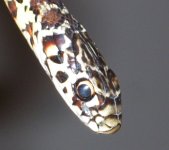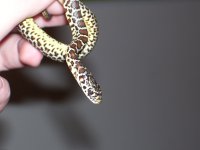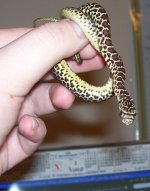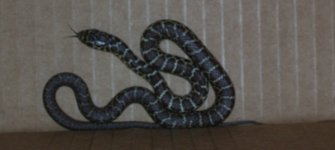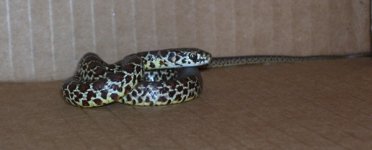I don't have a caresheet, but I can tell you a few things...
First they are entirely diurnal and prefer warmer temps in the high 80s. They are visual hunters and will eat just about anything, but prefer rodents, lizards and other snakes. They are racers, and as such, are known to feed on road kill in the wild, which *should* make f/t conversion fairly easy. They are FAST and have an ultra high metabolism, so they need to be fed more often than a corn or kingsnake would. Every 4-5 days for an adult would be good, I think. They are MUCH more slender than corns, and would do better with smaller prey more often. Being diurnal, they would most likely fare better with a basking light rather than an UTH.
Judging from the pictures...I'd offer him a live pinky and see what he does. You might be surprised.
Ultimately, with the temps you describe, this snake is in danger if you release him, IMO. I'm not an expert, but 70*F daytime temps and 40*F nighttime temps...he should already be cozied up in a burrow somewhere. If you release him now, he runs the risk of freezing to death before he can find a suitable place to brumate. These snakes prefer warmer temps, and you wouldn't even find a rubber boa out in those temps, and I've seen them crawling in snow.
At the very least, I would put him in an enclosure and keep him in the garage where he can at least brumate safely to be released in the warmth of next spring.
Just my $.02...

